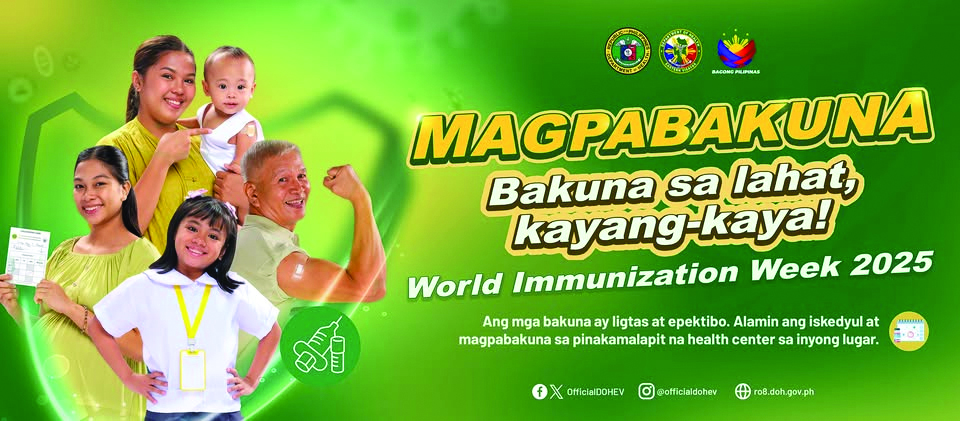From having over one million unvaccinated or “zero-dose children” in the Philippines from 2020 to 2021, the number dropped to 163,000 in 2023 following the intensified efforts of vaccination nationwide.
As of February 2025, the Department of Health (DOH) still reached a stride in reducing the number of at-risk children and has fully immunized a total of 1,542,282 out of the 2,392,392 aged 0-12 months in the Philippines.
Meanwhile, the coverage for the pneumococcal polysaccharide vaccine (PPV) remains at 66% among eligible indigent senior citizens, while the influenza vaccine has reached 65.57% of the eligible population—including seniors, healthcare workers, and individuals with comorbidities.
Sustained and intensified efforts—both on the local and national level, remain crucial to ensure every Filipino receives life-saving vaccines. Despite the significant improvement in battling hesitancy, persistent challenges within the immunization program are still to be addressed. Interconnected strategies on strengthening the supply chain to guarantee consistent vaccine availability will pave the way for higher vaccination coverage and a healthier future for Filipinos of all ages.
Unicef Philippines warned that despite the improvements, decades of hard-won progress in immunization would be lost without sustained action and funding. To prevent outbreaks, vaccine coverage must reach at least 95% of the eligible population for all vaccines.
“Routine immunization has saved many lives in the Philippines by eliminating maternal and neonatal tetanus, containing measles outbreaks, and ending polio transmission in 2021.
The government’s continued investment in the national immunization programme will build resilient, sustainable systems, especially in the last mile. Our children’s future, where they are healthy, protected, surviving, and thriving, is the dose of good news we need in unpredictable times,” said Behzad Noubary, Unicef Philippines Acting Representative.
To increase vaccination coverage across life stages, the DOH, together with the World Health Organization (WHO) and Unicef, continues to strengthen vaccination in communities. As part of its efforts, the DOH will be joining countries across the globe in celebrating the World Immunization Week (WIW) on April 24-30, 2025, aimed at converting vaccines into vaccinations through stronger national and local immunization programs.
“WHO commends the National Immunization Program Acceleration Plan and the growing efforts to engage local governments, civil society, and partners. Yet, persistent inequities remain a significant challenge—many unvaccinated children live in underserved communities. Leaders across all sectors must champion immunization and promote equity to reach every child, because every child vaccinated is a step toward a safer, healthier future — and a reminder of what is humanly possible,” said Dr Rui Paulo de Jesus, WHO Representative to the Philippines.
For the national launch of World Immunization Week in Calbayog City, Samar, more than 31,000 individuals will be vaccinated. Children aged 0–12 months will receive vaccines for Tuberculosis, Polio, Pneumonia, Measles, Mumps, Rubella, and the pentavalent vaccine. Senior citizens will get flu and pneumonia shots, girls aged 9-14 will receive the HPV vaccine, and pregnant women will be given the Tetanus-Diphtheria vaccine. The week-long initiative emphasizes the importance of collective action to ensure more Filipinos—especially children—are protected against VPDs.
“Vaccination is a cornerstone of the DOH’s 8-Point Action Agenda. Towards Universal Health Care, we continue to engage local leaders, parents, health workers, and partners to build a strong and resilient immunization system, where the promise of improved vaccination coverage rates is realized, and more lives across life stages are protected from vaccine-preventable diseases,” said DOH Secretary Teodoro J. Herbosa. (PR)




